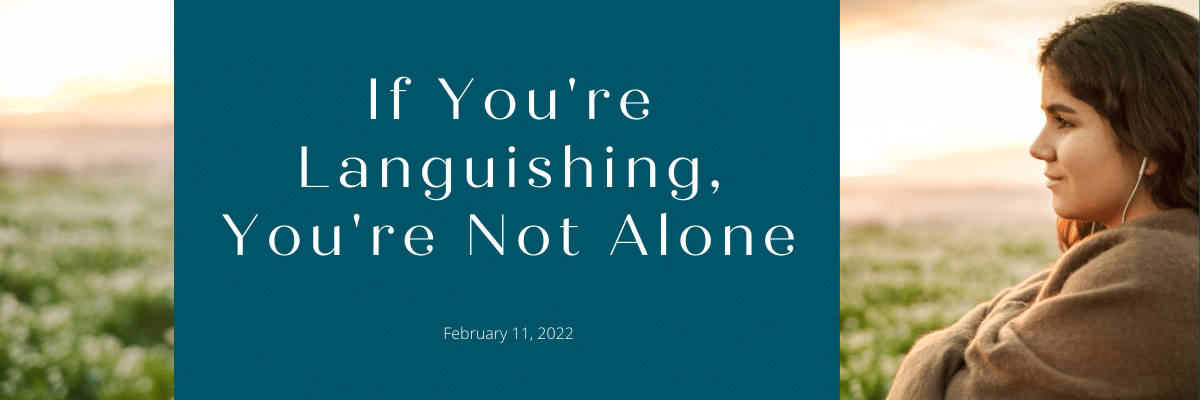
Considering writing a blog post is a humbling experience. What could I offer that might be of service to you, creative and sensitive therapists who are doing their best working with clients during a pandemic that was beyond our imagining two years ago?
Perhaps I might offer this gentle reminder that continues to support me: you are not alone. If you’re thriving, you’re not alone. If you’re struggling, you’re not alone. And if you’re moving through hills and valleys of thriving and struggling, flourishing and languishing, or experiencing these things simultaneously, I open my heart in your direction and say: yes. We are not alone.
As many of us know, languishing (Keyes, 2002) describes “not feeling good about or not functioning well in life” (Keyes et. al, 2010, para. 8). Languishing can present as “an emptiness and stagnation, constituting a life of quiet despair” (Keyes, 2002, p. 210). I have read about how to support myself through languishing, including Grant’s timely New York Times op-ed (2021) on the topic. I have also felt pressure from external sources and from myself to “get out of” and “stop” languishing. I’m wondering if you’ve felt this pressure as well.
After some time, here at the 2-year mark of the pandemic, I’m now less interested in trying to “get out of” languishing and more interested in accepting it. This is because, for me, being with an experience and allowing its presence is often the way through. As Carl Rogers said: “The curious paradox is that when I accept myself as I am, then I change” (Rogers, 1995, p. 17).
Perhaps there might be a way for us to experience a sense of connection in the midst of our challenges. A way to remind ourselves that we’re not alone while being with our unique languishing and all that lies within that experience.
I have created a short Guided Music and Journaling Experience (available on my Free Resources Page) in the form of a workbook that invites you into this connected being-with through music. Please know that this offering does not come with any expectations to “solve” languishing or other presenting challenges.
Rather, this is offered from a place of mutual experience, of knowing that being with where we are is enough, and that immersing ourselves in beauty and sound can open doors that are perhaps inaccessible to our conscious minds.
May you and yours be safe and well.
Kindly,

![]()
References
Grant, A. (2021, December 3). There’s a name for the blah you’re feeling: It’s called languishing. New York Times.
Keyes, C. L. M. (2002). The mental health continuum: From languishing to flourishing in life. Journal of Health and Social Behavior, 43(2), 207–222.
Keyes, C. L. M., Dhingra S. S., & Simoes, E. J. (2010). Change in level of positive mental health as a predictor of future risk of mental illness, American Journal of Public Health, 100(12), 2366-2371.
Rogers, C. (1995). On becoming a person. Houghton Mifflin.
![]()
Thank you for visiting the Music-Integrated Therapy blog!
Please note that this blog is intended for:
-Mental health practitioners interested in integrating music into their clinical work
-Mental health practitioners who love music
-Mental health practitioners trained in Music-Integrated Therapy
If you are seeking support in your mental health & wellbeing from Seabrook Music Therapy, please visit the client-facing website at: https://deborahseabrook.com/sessions/


